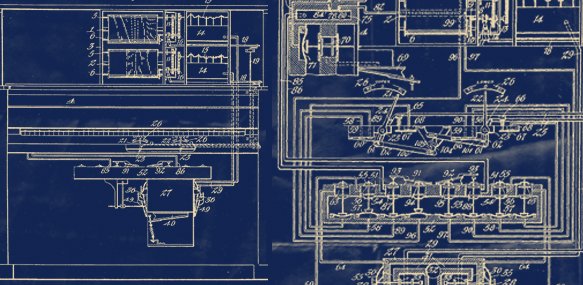“So what do player pianos have to do with media studies?”
I get that question a lot when I tell people about my CMS thesis topic. A lot of media studies work focuses on new stuff: “the” media, social networks, TV on the internet, and so on. The question is not so much about whether player pianos are media (I assure you, they are), but rather about their usefulness to media studies: Why study some rickety old obsolete technology? What can we learn about media from a technology that we don’t even use anymore?
It turns out, we can learn quite a bit. Thanks to a CMS grant, I recently got the chance to spend a week at the University of Maryland, College Park in the Michelle Smith Performing Arts Library. I was there to check out the Howe Collection of Musical Instrument Literature–a treasure trove of documents relating to mechanical music at the turn of the 20th century. The collection includes all sorts of material, from music catalogs and advertisements to company letterhead and sales manuals. The first thing you realize leafing through all this material? This technology was not always obsolete!*
It’s sort of obvious to say, but too easily forgotten: the player piano may seem obsolete now, but for the people who invented and used the various devices we lump together as “player pianos” today, the technology was very much alive and in use. So for someone like me, who is interested in the history and use of these machines, the first thing to do is to forget what you think you know about rinky-tink old machines and let the documents speak for themselves. Famous pianists of the day are all over the advertisements, making grand claims like: “Anyone who hears the Pianola will surely think it is a great virtuoso that plays” or “The Pianola is the only instrument that allows the player to interpret with feeling and emotion.”
“Interpret?” Another benefit of taking a closer look at these old technologies is that memory is not always kind. The common take on player pianos is that they are completely automatic and noisy things that sort of approximate human playing. Actually, most of the various kinds of player pianos were interactive…
Although they took care of “remembering” the notes, player pianos were fitted with all sorts of devices that allowed users to alter playback: levers to vary the speed, pedals that allowed control over dynamic level, buttons that could change the relative volume of melody and accompaniment. These interactive features encouraged listeners to remain involved with playback, and these operators were called “pianolists,” after the Aeolian Pianola, the earliest popular player piano.
“Live” music as we think of it today didn’t exist before audio recording–it was impossible for a sound to not be live. The player piano makes things a bit more complicated: is it still live if the notes are all punched on a roll in advance but “interpreted” by a live pianolist? Advertisements showing the ghostly hands of famous pianists on the keys suggested perfect fidelity: the parts of your piano would move exactly how they did when Rachmaninoff or Paderewski played. Would this recording, played on an actual piano, count as “live?”
These issues are not just weird historical relics: anxieties about technology and performance continue on today. Think of the debates about Auto-Tune, lip-syncing, Guitar Hero, turntablism, pre-recorded backing tracks, laptop DJs, and countless other musical technologies. If we start from the assumption that the phonograph represents “fundamental” sound reproduction and that the “natural” way to use the record is to passively listen (although this was not always the case (PDF)), then these technologies seem like strange new complications of recording and performance. If, on the other hand, we let alternative technologies like the player piano back into our history, then these messy performance/recording technologies seem less strange and less new.
So, what do player pianos have to do with media studies?
By looking back at a technology no longer in widespread use, we can find the new in the old–the promise that player pianos held for those who invented and used them when they were new. This perspective helps us look at our present situation and find the old in the new–the ways in which complicated arrangements of performing humans and machines are not just a product of 21st century technology. Hopefully this historical perspective will help us to realize that unusual performance technologies are not inherently “unnatural,” allowing us to tun passive “listeners” into active “players” and giving us the freedom to experiment.
*And, if you talk to the dedicated and generous communities of collectors and enthusiasts, they’ll tell you how the automatic piano technology of the late ’20s still hasn’t been surpassed!
An apology to sticklers: in the interest of keeping things simple, I’ve not distinguished between the reproducing piano and the standard player piano (not to mention the dozens of different makes and models, all unique). The interactive features described above were relatively common; reproducing pianos included extra features that allowed the formerly user-controlled parameters to be automated, thereby making possible the reproduction of famous pianists’ performances that had been recorded on special recording pianos. So, if you wanted to sit back and listen, you could. However, even reproducing pianos would let you turn off the reproducing functionality and take control of interpretation yourself.




